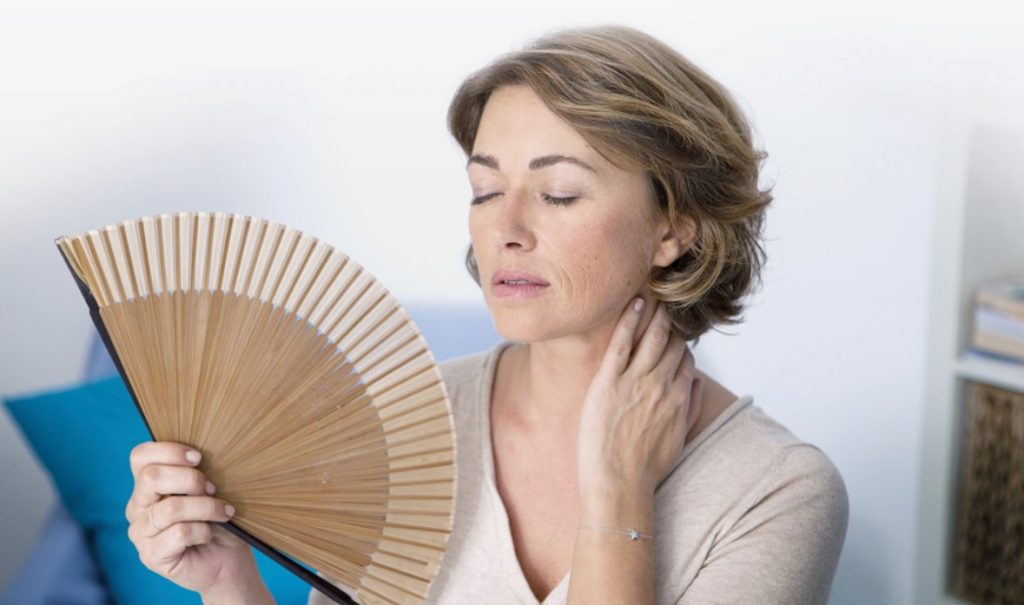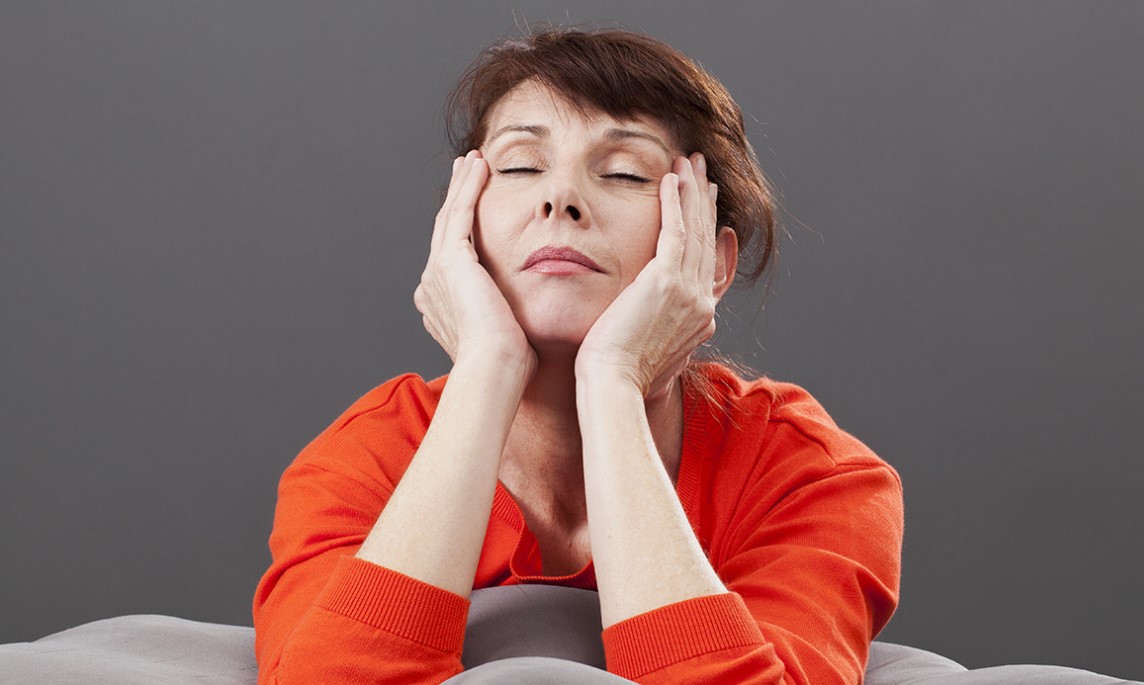The onset of menopause is a significant phase in a woman’s life, often accompanied by a mix of emotions and physical changes. Although it is a natural part of aging, the transition can be challenging due to various symptoms and the overall impact on a woman’s health and well-being. Many women seek support from an aesthetic clinic Dubai to help manage these changes, utilizing specialized treatments to enhance their well-being. This article aims to provide a detailed overview of menopause, its symptoms, stages, complications, diagnostic methods, and treatment options, as well as practical advice for managing this transition smoothly.
What is Menopause?
Menopause marks the end of a woman’s reproductive years, defined by the cessation of menstrual periods for 12 consecutive months. This physiological condition is due to a decline in the production of hormones such as estrogen and progesterone by the ovaries. Typically, menopause occurs between the ages of 45 and 55, but it can vary based on individual factors.
The Biological Process of Menopause
The biological process of menopause involves several stages:
1. Perimenopause: This transitional phase can begin several years before menopause, typically starting in a woman’s 40s but sometimes earlier. During perimenopause, estrogen levels fluctuate irregularly, leading to menstrual irregularities and the initial onset of menopausal symptoms.
2. Menopause: Officially marked when a woman has not had a menstrual period for 12 consecutive months. This stage signifies the end of ovarian function and the reproductive phase of a woman’s life.
3. Postmenopause: This stage follows menopause and lasts for the remainder of a woman’s life. During postmenopause, menopausal symptoms may continue but generally decrease in intensity over time.

Symptoms of Menopause
The symptoms of menopause can be categorized into metabolic-endocrine and psycho-emotional symptoms.
Metabolic-Endocrine Symptoms
1. Hot Flashes and Night Sweats: Sudden feelings of intense heat, often accompanied by sweating and flushing, are common. These can disrupt sleep and daily activities.
2. Weight Gain: Hormonal changes can lead to an increase in body fat, particularly around the abdomen.
3. Bone Density Loss: Reduced estrogen levels contribute to a decrease in bone density, increasing the risk of osteoporosis.
4. Changes in Cholesterol Levels: Menopause can affect lipid metabolism, leading to higher levels of LDL (bad cholesterol) and lower levels of HDL (good cholesterol).
5. Insulin Resistance: There may be a higher risk of developing insulin resistance and type 2 diabetes.
Psycho-Emotional Symptoms
1. Mood Swings: Fluctuating hormone levels can cause irritability, anxiety, and depression.
2. Memory Problems: Some women experience difficulties with concentration and memory.
3. Sleep Disturbances: Insomnia and other sleep-related issues are common during menopause.
4. Decreased Libido: Reduced hormone levels can lead to a decrease in sexual desire and vaginal dryness, which may cause discomfort during intercourse.
Timing of Menopause
The timing of menopause is influenced by several factors, including genetics, lifestyle, and overall health. Women with a family history of early menopause may experience it sooner. Other factors such as smoking, chemotherapy, or ovarian surgery can also impact the timing.
Genetic Factors
Genetics play a crucial role in determining the age at which menopause begins. Women often experience menopause around the same age as their mothers or sisters.
Lifestyle Factors
- Smoking: Smoking has been shown to cause earlier onset of menopause. It accelerates ovarian aging and depletes the number of eggs.
- Body Weight: Underweight women or those with eating disorders may experience menopause earlier due to reduced estrogen levels.
- Physical Activity: Regular exercise can help delay the onset of menopause and reduce the severity of symptoms.

Types and Stages of Menopause
Menopause can be classified into different types and stages:
- Natural Menopause: This occurs naturally due to aging and the gradual decline in ovarian function.
- Surgical Menopause: Menopause induced by the surgical removal of the ovaries, often performed during a hysterectomy.
- Premature Menopause: Menopause that occurs before the age of 40. It can be due to genetic factors, autoimmune diseases, or medical treatments such as chemotherapy.
- Induced Menopause: Caused by medical treatments like chemotherapy or radiation therapy that damage the ovaries.
Complications of Menopause
Menopause can lead to several complications, including:
- Cardiovascular Disease: The risk of heart disease increases after menopause due to changes in cholesterol levels and blood pressure.
- Osteoporosis: Decreased bone density makes bones more susceptible to fractures.
- Urinary Incontinence: Weakened pelvic muscles can lead to urinary incontinence.
- Sexual Dysfunction: Vaginal dryness and loss of elasticity can cause discomfort and affect sexual health.
- Mental Health Issues: Increased risk of depression and anxiety due to hormonal changes.
Impact on Overall Health
- Metabolic Syndrome: Menopause increases the risk of metabolic syndrome, a cluster of conditions including high blood pressure, high blood sugar, excess body fat around the waist, and abnormal cholesterol levels.
- Autoimmune Disorders: The decline in estrogen may trigger autoimmune disorders such as rheumatoid arthritis or thyroid diseases.
Diagnostic Methods
Diagnosis of menopause is primarily based on clinical symptoms and menstrual history. However, certain tests can help confirm the diagnosis:
- Blood Tests: Measuring levels of follicle-stimulating hormone (FSH) and estradiol can provide insights into menopausal status.
- Thyroid Function Tests: Since thyroid disorders can mimic menopause symptoms, these tests are essential for differential diagnosis.
- Bone Density Tests: To assess the risk of osteoporosis, bone density tests such as DEXA scans are recommended.
- Lipid Profile: Regular monitoring of cholesterol levels is important to manage the risk of cardiovascular disease.
Treatment of Menopause
Treatment for menopause focuses on relieving symptoms and preventing complications. It includes:
1. Hormone Replacement Therapy (HRT): HRT can help alleviate symptoms by replacing declining hormones. However, it is essential to consult a doctor to weigh the benefits and risks.
2. Non-Hormonal Medications: Antidepressants, anti-seizure medications, and other non-hormonal drugs can help manage specific symptoms like hot flashes and mood swings.
3. Lifestyle Modifications: A nutritious diet, regular exercise, and stress management techniques are crucial for overall well-being.
4. Calcium and Vitamin D Supplements: These supplements can help maintain bone health and reduce the risk of osteoporosis.
5. Herbal Remedies: Some women find relief through herbal supplements like black cohosh or phytoestrogens, but it is essential to consult a healthcare provider before use.
Managing Menopause: Practical Tips
To reduce discomfort during menopause, consider the following tips:
1. Healthy Lifestyle: Engage in regular physical activity, maintain a balanced diet, and avoid smoking and excessive alcohol consumption.
2. Stay Hydrated: Drink plenty of water to help manage hot flashes and prevent dehydration.
3. Stress Management: Practice relaxation techniques such as yoga, meditation, or deep breathing exercises.
4. Adequate Sleep: Establish a regular sleep routine and create a comfortable sleep environment to combat insomnia.
5. Regular Check-ups: Schedule regular medical check-ups to monitor health and address any concerns promptly.
Exercise and Physical Activity
1. Strength Training: Helps maintain muscle mass and bone density, reducing the risk of osteoporosis.
2. Aerobic Exercise: Activities like walking, swimming, or cycling can improve cardiovascular health and help manage weight.
3. Flexibility and Balance Exercises: Yoga or Pilates can enhance flexibility, balance, and overall well-being.
Nutrition and Diet
1. Balanced Diet: Focus on a diet rich in fruits, vegetables, whole grains, lean proteins, and healthy fats.
2. Calcium-Rich Foods: Include dairy products, leafy greens, and fortified foods to support bone health.
3. Omega-3 Fatty Acids: Found in fish, flaxseeds, and walnuts, these can help reduce inflammation and improve heart health.
4. Limit Caffeine and Alcohol: Reducing intake can help manage hot flashes and improve sleep quality.
Psychological and Emotional Support
1. Support Groups: Joining a menopause support group can provide a sense of community and shared experiences.
2. Therapy: Cognitive-behavioral therapy (CBT) can help manage mood swings, anxiety, and depression.
3. Communication: Open communication with family and friends about the challenges of menopause can foster understanding and support.
Conclusion
Menopause is a natural and inevitable part of aging for women. While it brings about significant changes and challenges, understanding its symptoms, stages, and treatment options can empower women to navigate this transition with confidence. By leading a healthy lifestyle, seeking appropriate medical care, and staying informed, women can manage menopause effectively and maintain their quality of life. If you experience symptoms of menopause, consult a specialist to discuss the best approach for your individual needs.
Menopause should not be a source of anxiety or fear but rather an opportunity to focus on self-care and well-being. Embracing this phase with a positive mindset and proactive health measures can lead to a fulfilling and healthy postmenopausal life.

Skydiver, maker, audiophile, Vignelli fan and TDC honorary member. Working at the nexus of simplicity and mathematics to craft experiences both online and in real life. I sometimes make random things with friends.
